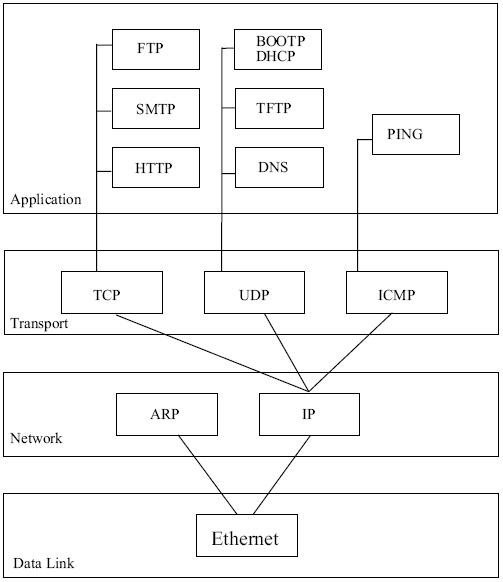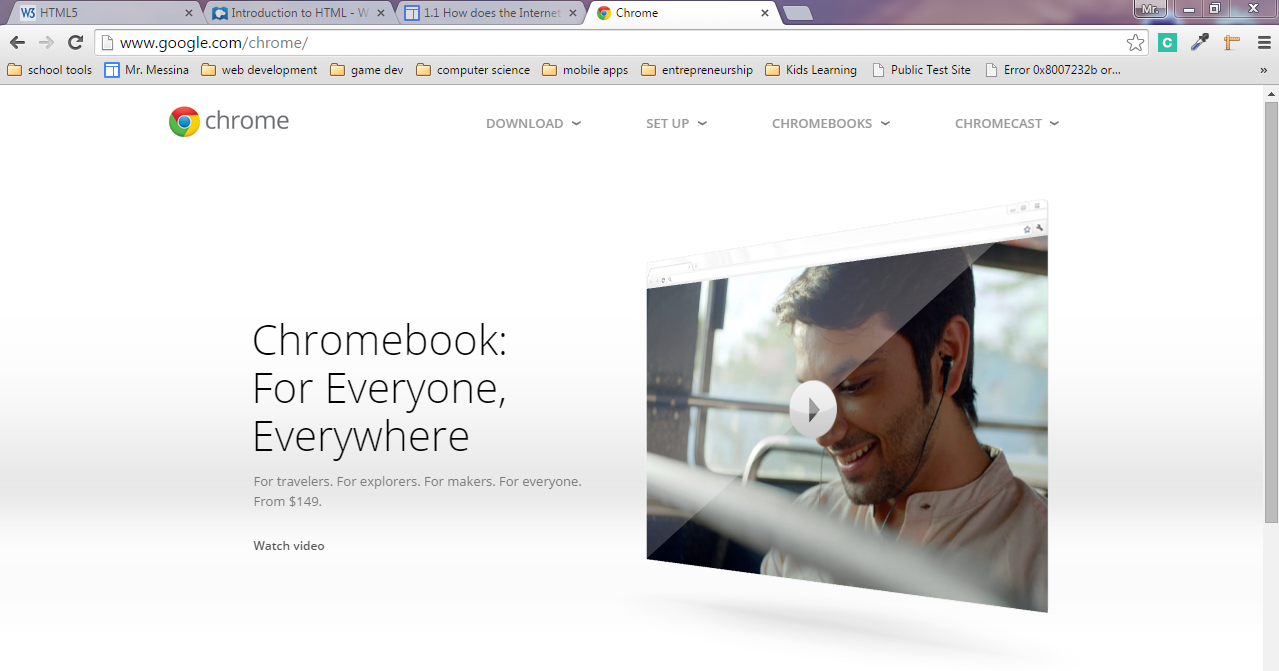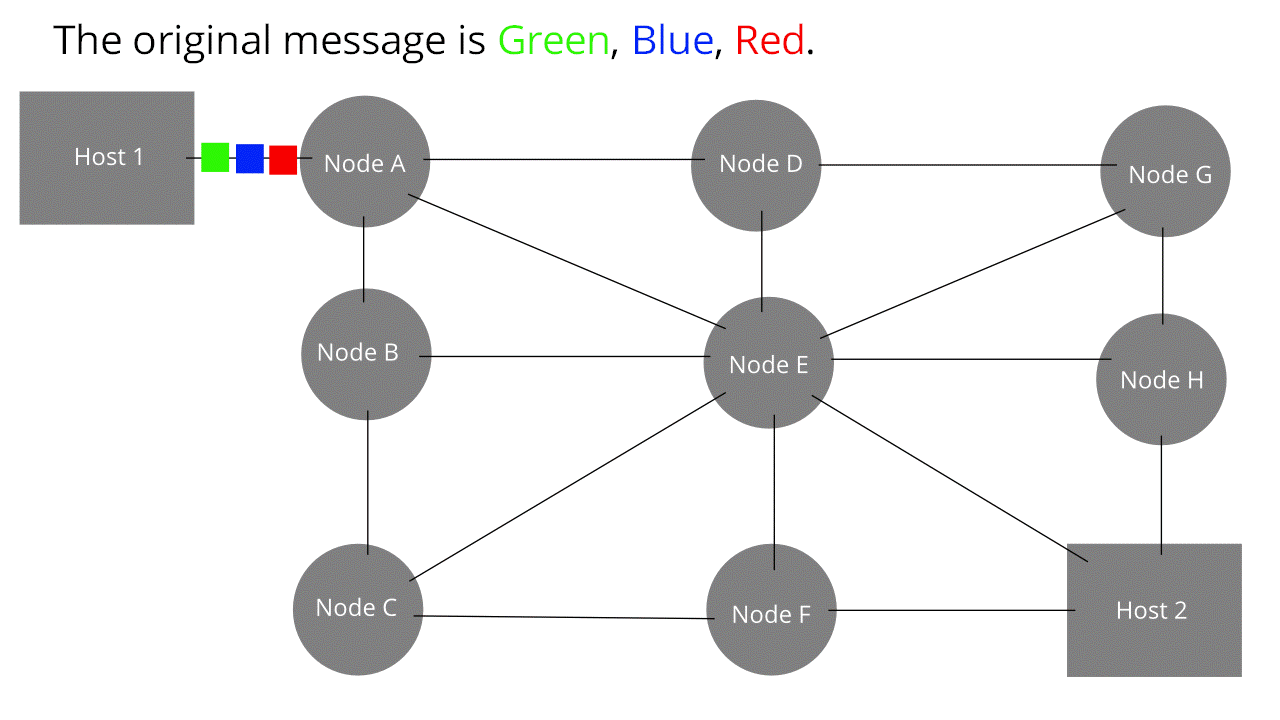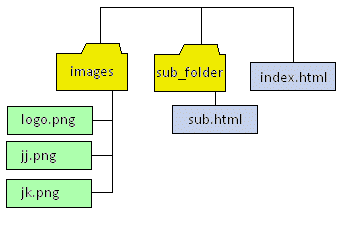1.1 How the Internet Works
posted September 1, 2014
What is the Internet?
You were born with it. You just go online and you can find just about anything you want, right?
The Internet is a network of computers that connects computers and devices from all around the world.
Visit your favorite website. What do you see? What technologies are applied to make it a good site?
Your first assignment is to assess your favorite website.
Components of the World Wide Web

Internet Protocol Suite (TCP/IP)
With all the different types of computers, networks, systems, software and programming languages, there was a need to create a common language and set of rules to establish how information passes through the Internet.
Computers communicate through telephone wires, cables and satellite links using a common language or Protocol Suite.
Before you even got to your favorite website, there were a set of rules in place to make it work (TCP/IP)...
- First there are a set of rules that all computers, networks, and systems use on the Internet.
- Internet Protocol Suite is broken up into different layers:
- Application Layer - this is where the HTTP tries to locate your website using DNS
- Transport Layer - the Transmission Control Protocol (TCP) is the core protocol used to access the requested website
- Network Layer - your website is found which is an IP address
- Data Link
- You request a web site with a web browser and follow the Protocol above
- The information your requested was assembled with a series of packets, delivered in a presentable format
- Your website is stored on a big computer called a web server that "serves" the information back to your web browser.
 SNMPtools.net
Application Layer
SNMPtools.net
Application Layer
Stands for HyperText Transfer Protocol. This is how the web browser requests access to websites stored on web servers. Think of a website as an "app" and http:// is used to access the app with the URL.
Application Layer
Everything that connects to the Internet uses an IP address. The "Domain Name System" turns a domain name like "en.wikipedia.org" into an IP address ("208.80.154.224:80" in this case), where the server is located. DNS is the Internet's relay system - it is a bunch of servers communicating together databases of Internet’s way to refer to another computer.
Transmission Control Protocol (TCP)
Transport Layer
TCP is a core protocol of the Internet Protocol Suite. It originated in the initial network implementation in which it complemented the Internet Protocol (IP).
The Transmission Control Protocol (TCP) is intended for use as a highly reliable host-to-host protocol between hosts in packet-switched computer communication networks, and in interconnected systems of such networks.
TCP provides reliable, ordered, and error-checked delivery of a stream of octets between applications running on hosts communicating over an IP network.
TCP is the protocol that major Internet applications such as the World Wide Web, email, remote administration and file transfer rely on.
Network Layer
Internet Protocol is the communications protocol that provides a system for computers on networks and routes traffic across the Internet.
The Internet uses IP addresses serve information to the requester. Every devices that connects to the Internet should had an IP address.
Your IP address will be a number, like 172.16.254.1 or 2001:db8:0:1234:0:567:8:1.
Internet Protocol version 6 (IPv6) is the most recent version of the Internet Protocol (IP).
Data Link Layer
Ethernet is a family of computer networking technologies for local area networks (LANs) and metropolitan area networks (MANs).

First you need a computer or a device right?
Open your favorite web browser - an app that uses HTML as the core programming language to read and present web pages.
Web browsers are also the most common form of web clients.
Nowadays, a web client can be a smartphone application, a tablet browser, a built-in Android surfer for a television, a screen reader, a browser on a laptop, and so on.

Packet switching involves data requests being split into small chunks (packets,) which can be processed quickly without blocking communication from other parties — this principle is still used to run the Internet today.
 Wiki Commons
Wiki Commons
Web servers are powerful computers that store and "serve" web pages to web clients.
Websites are folders filled with HTML documents, images, media and other documents. Below is an example of a web site's folder structure.

So we have a web client (browser) which is used to request a web page and and a web server that stores and serves the requested web page. However, there is a lot of stuff that happens in between...

 SNMPtools.net
SNMPtools.net



 Wiki Commons
Wiki Commons


